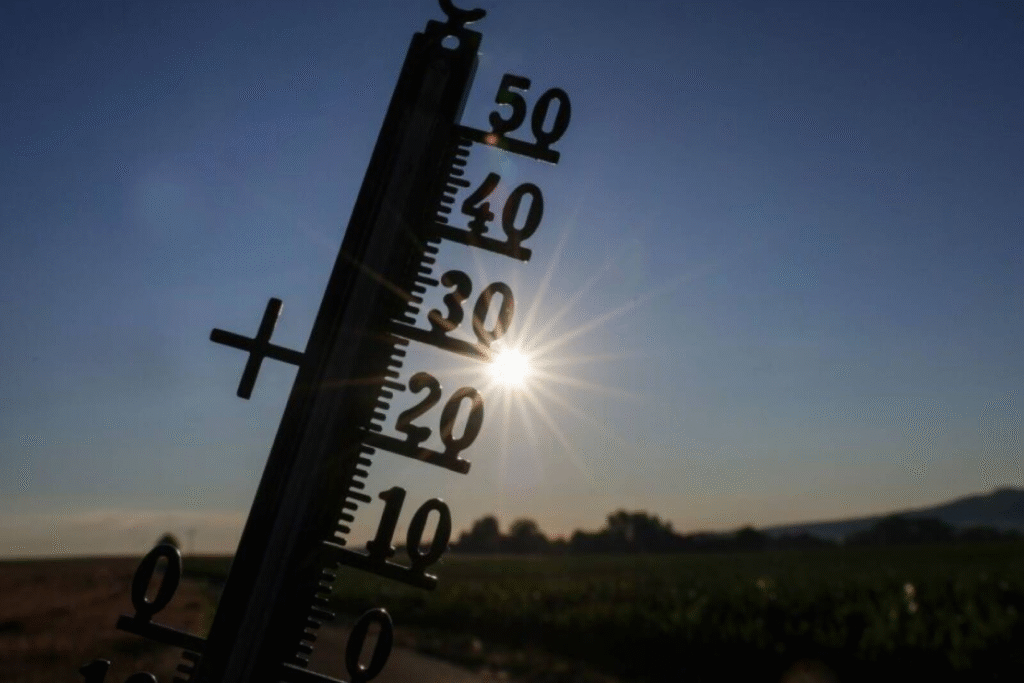
The demand for cooling in Austria’s cities will rise sharply in the coming years and decades due to climate change, according to a study by researchers. By 2050, the number of days when cooling rather than heating is needed could increase by more than 40 percent compared to 2021, the team calculated in its report “Urban Cooling Demand in Austria 2030/2050.” Additional “cooling degree days” will become a growing reality even in Alpine regions.
In the country’s east, it has already become clear in recent years that the climate has shifted toward more hot days and tropical nights. This has been documented in numerous statistics, evaluations, and scientific analyses—as well as in rising sales of air conditioners and shading systems. Running cooling systems is known to be energy intensive. Nationwide, depending on the scenario, an “absolute cooling demand of up to 6.3 terawatt hours is projected for 2050,” study co-author Lore Abart of the Institute of Spatial Planning, Environmental Planning and Land Use Planning at the University of Natural Resources and Life Sciences (Boku) Vienna said in a press release.
Researchers expect rapid demand growth
At present—meaning in the study’s base year of 2021—cooling requires about 2.5 terawatt hours of energy resources. The country faces “a significant increase with both ecological and economic consequences.” Assuming that comfort levels in Austrian homes and offices remain roughly the same, annual cooling demand could already reach 2.7 to 4.3 terawatt hours within five years, depending on climate scenarios, the report states. The project also involved civil engineers and experts from the Vienna-based Institute of Building Research & Innovation.
Depending on favorable or unfavorable climate developments, this figure is expected to rise to between 3.5 and 6.3 terawatt hours per year by 2050. About two-thirds of this demand will come from homes, with the rest from offices, the authors wrote. They also broke down projections by local infrastructure. The highest cooling needs in 2050 will be in Vienna and its surroundings, Burgenland, and along the Danube Valley. However, the steepest increases will occur in Alpine provinces, as “even higher-altitude regions will warm more than before in the near future,” the researchers stressed in Boku’s press release on Monday.
Cooling demand on almost all days by 2050?
Looking at so-called cooling degree days—days when the outside temperature is significantly above the target value of 18.3°C—Austria could record 233 such days in 2050 under moderate scenarios. Under very unfavorable climate developments, that number could rise to 319 days, about a 50 percent increase compared to 2021.
The report is intended as guidance for planning and implementing climate protection and adaptation strategies, urban planning, changes in building codes, and the design of future energy systems. A “cooling matrix” developed in the project provides a framework to estimate demand by building type.
Priority for passive cooling measures, such as shading
“The summers in Austria are getting hotter—and our cities in particular must be prepared,” Abart said. “Those who now invest in building standards, urban planning, and smart cooling technologies can save costs, reduce energy consumption, and advance climate protection.” According to the researchers, priority should always be given to “passive cooling measures” such as shading, enhanced ventilation, or solar-control glazing, rather than energy-intensive active cooling with air conditioners or district cooling.

